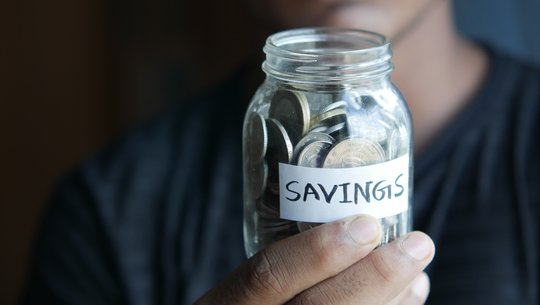
Many of us have found ourselves in stressful situations: Your car breaks down and needs a full repair, you or a family member faces an injury that brings mounting medical bills, or a storm damages your small business’ office.
We never expect emergencies to happen. But when they do, we’re left wondering how to pay the unexpected costs.
Scenarios like these are where an emergency savings fund will come in handy. Even in the largest of emergencies, having money set aside can provide a sense of security.
However, creating a fund for emergencies may look different than saving for planned life events such as college or retirement. It may not feel like a priority to save for a potential crisis, but consistent deposits into an emergency account will be beneficial when life throws unexpected curveballs.
Read the tips below for developing a reliable emergency savings fund.
1. Establish a goal amount you’d like to put toward emergency savings.
There’s no way to predict an event where you’ll need to withdraw money from an emergency savings fund, or what the expenses will be.
Financial experts recommend saving the equivalent of three to six months of living expenses for emergencies. This amount will depend on your income and size of your household.
Evaluate your current income and expenses, and determine a target amount you’d like to have in the account in a certain amount of time, whether it’s one year or 10 years from now.
Establishing a timeline will make it easy to decide how much to deposit into the account and how often.
2. Evaluate your spending habits.
Is there a subscription service you’re still paying for but rarely use, or a product you’ve been splurging a little too much on?
If you’re tight on available cash to allocate to an emergency fund, review your budget and current spending to determine if there’s an area where you can cut costs.
Also, consider using a budgeting app or budgeting resources offered by your bank to monitor your expenses to identify opportunities to reduce spending and transfer money to your emergency fund.
Perhaps you could start by depositing $500 and reallocate the $15/month you spend on a streaming service you aren’t using, easily adding an extra $180 annually to emergency savings and drawing more interest into the account.
Small, recurring payments can add up and create value in your emergency fund.
3. Set a fixed amount that you can deposit into emergency funds on a consistent schedule.
Whether it’s $500 once a month or $20 once a week, a little goes a long way to build your emergency funds.
Make a plan that works for you and your money, and either set reminders to manually transfer funds into the emergency account on a schedule or set up automatic deposits that will do the work for you.
4. Consider opening an account that can generate high value.
A benefit of savings accounts is interest earnings potential. There are various types of savings accounts that can accrue valuable interest.
Money market accounts can be beneficial in generating interest on savings to maximize the value of investments towards a rainy-day fund. You could also set up a certificate of deposit (CD), which will hold funds and generate interest for a fixed amount of time, commonly between one and three years.
Consult your banker to review account options and find what works best for your finances.
5. Keep your account accessible, but don’t let it tempt you.
Many of us are guilty of turning to our savings for extra spending cash.
However, consistently withdrawing from an emergency fund will defeat its purpose if you choose to spend the money regularly instead of keeping it saved away.
When you create your emergency fund, set the account up to make it easy to access in an emergency, but not in front of you when you’re looking for spending money.
This could look like keeping the account off your mobile banking app, so it isn’t at your fingertips to drive impulse withdrawals.
When it comes to saving for a rainy day, a little goes a long way. Regular, small investments can be instrumental in creating a healthy fund to rely on.
Review your finances and establish a savings plan so you’re covered should you find yourself in an unexpected situation. Call or visit your bank to determine the best emergency fund options for you.
At Royal Banks of Missouri, investing in our communities is our priority. For nearly 60 years, Royal Banks of Missouri has proudly served the St. Louis community. We are locally owned and offer a full range of banking services and business clients in St. Louis, Northeast Missouri and Illinois.



